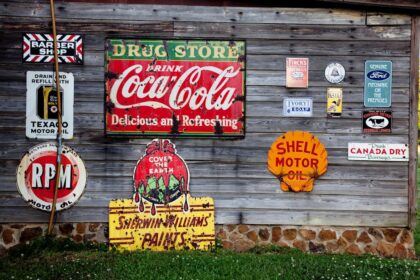Understanding the YouTube Ad Ecosystem & Its Unique Challenges
Optimizing your YouTube ad conversion path begins with a profound understanding of YouTube as an advertising platform, distinctly separate from traditional search or display networks. YouTube is fundamentally a video-first environment, and its users arrive with a different mindset. Unlike Google Search, where users actively seek solutions and often possess high commercial intent, YouTube users are primarily seeking entertainment, education, or inspiration. They are in a discovery mode, not necessarily a buying mode. This fundamental difference dictates the initial approach to ad creative and subsequent landing page design.
YouTube offers a diverse array of ad formats, each with unique implications for the conversion path. In-stream ads (skippable and non-skippable) interrupt content, demanding immediate attention and a clear value proposition to prevent a skip or foster retention. Bumper ads, short and non-skippable, are ideal for brand awareness and recall but require a highly memorable message and a subsequent, often indirect, conversion strategy. Outstream ads appear on partner websites and apps, expanding reach beyond YouTube itself. Masthead ads, prominently displayed on the YouTube homepage, are premium placements for maximum visibility. Understanding these formats is crucial, as the user’s journey from each will subtly influence their receptiveness on the landing page.
A significant challenge on YouTube is the “attention economy.” Users are bombarded with content and have low tolerance for irrelevant or overly salesy interruptions. Ads must quickly establish relevance, provide value, and clearly articulate the next desired action. The “skip ad” button is a constant threat, making the first five seconds critical for skippable in-stream ads. This necessitates an ad creative that captures interest, addresses a pain point, or presents an enticing offer within that brief window. If the ad fails to engage, the conversion path is broken before it even begins.
Measuring YouTube ad performance extends beyond simple clicks. View-through conversions (VTCs), where a user sees an ad and converts later without directly clicking, are particularly important. This metric acknowledges YouTube’s role in building brand awareness and influencing purchase decisions over time, even if the direct click-to-conversion rate seems low. However, for direct response campaigns focused on immediate conversions, click-through rates (CTR) and on-page conversion rates are paramount. Advertisers must define their primary goal – whether it’s brand lift, lead generation, or direct sales – and tailor their measurement and optimization efforts accordingly. The unique challenge lies in bridging the gap between passive consumption and active engagement, guiding the viewer seamlessly from a visual story to a transactional or data-capture experience on a landing page.
The Crucial Hand-off: From YouTube Ad to Landing Page
The transition from a YouTube ad to a landing page represents the most critical hand-off in the entire conversion path. This is the moment where a viewer, having consumed your video message, decides whether to take the next step towards becoming a lead or customer. A seamless and intuitive transition is not merely desirable; it is absolutely essential for maximizing conversion rates. Any friction, inconsistency, or ambiguity at this stage can lead to immediate drop-offs, rendering your ad spend ineffective.
The core principle governing this hand-off is message match and continuity. Your YouTube ad sets an expectation, creates a narrative, or presents a specific offer. The landing page must unequivocally fulfill and elaborate upon that expectation. If your ad promises a “free guide to digital marketing,” the landing page’s primary headline and visual elements should immediately confirm “Get Your Free Digital Marketing Guide Now.” Discrepancies, no matter how subtle, trigger cognitive dissonance. If a user clicks an ad for “50% off all shoes” and lands on a generic homepage, or a page promoting “new arrivals” without a prominent mention of the discount, they will likely feel misled and abandon the site. This mental disconnect is the leading cause of high bounce rates from ad traffic.
Setting clear expectations in the ad itself is paramount. Your YouTube ad should not be a mystery box that only hints at a solution. It must clearly articulate:
- What problem are you solving?
- What specific offer or value are you providing?
- What is the immediate next step (the call to action)?
- What should the user expect to see on the next page?
For instance, if your ad showcases a particular software feature, the landing page should immediately highlight that feature and its benefits, rather than requiring the user to navigate through a complex website. If the ad promotes a limited-time sale, the landing page should prominently feature a countdown timer and the specific discounted products.
The Call-to-Action (CTA) within the YouTube ad serves as the bridge. It must be prominent, clear, and actionable. Options like “Learn More,” “Shop Now,” “Sign Up,” “Download,” or “Get Quote” are common. The chosen CTA should directly correspond to the primary action you want the user to take on the landing page. Avoid generic CTAs if a more specific one is available, and ensure the ad’s CTA button or end screen element is easily clickable. The visual design of the CTA in the ad should also be consistent with the button design on the landing page, further reinforcing continuity.
Moreover, consider the context of the click. Users might click an ad on a mobile device while commuting or watching TV. The landing page must be impeccably optimized for mobile responsiveness and quick loading. A slow-loading or poorly formatted mobile page will immediately deter users, regardless of how compelling the ad was. This technical aspect of the hand-off is as crucial as the creative and messaging alignment. The goal is to create an uninterrupted flow, a journey so smooth that the user perceives the ad and the landing page as a single, cohesive experience.
Crafting the Perfect YouTube Ad for Conversion
A high-converting YouTube ad isn’t just about compelling visuals; it’s a meticulously engineered piece of persuasive content designed to funnel viewers towards a specific conversion goal. Every element, from the script to the targeting, plays a role in this conversion journey.
A. Ad Creative & Scripting for Conversion
The heart of any successful YouTube ad lies in its creative and the underlying script. Unlike other ad types, video demands a multi-sensory approach.
- Clear Value Proposition: Within the first 5-10 seconds (especially for skippable ads), clearly state what problem you solve or what benefit you offer. Why should the viewer care? This must be immediately evident.
- Problem/Solution Framework: Engage viewers by highlighting a common pain point or desire they can relate to, then present your product or service as the ideal solution. Show, don’t just tell, how your offering alleviates the problem. For example, an ad for productivity software could show a stressed individual drowning in tasks, followed by the software effortlessly organizing their workload.
- Emotional Connection: People buy on emotion and justify with logic. Use storytelling, relatable characters, or aspirational imagery to evoke feelings like joy, relief, ambition, or security. An ad for a travel destination might focus on the feeling of escape and adventure.
- Urgency/Scarcity: Where appropriate, create a sense of urgency to prompt immediate action. Phrases like “Limited-time offer,” “While supplies last,” or “Register by [Date]” can be powerful motivators.
- Visual Consistency with Landing Page: This is paramount for message match. The colors, fonts, branding, and even the “hero” image or video clip used in the ad should mirror those on the landing page. If your ad features a specific product in a unique setting, show that exact product in a similar setting on the landing page.
- Audio Elements (Voiceover, Music): High-quality audio is often overlooked. A professional, clear voiceover can significantly enhance credibility. Background music should set the right tone – uplifting, professional, or calming – without distracting from the message. Ensure captions are available for viewers watching without sound.
- Ad Length Considerations:
- Bumper ads (6 seconds): Best for brand awareness and recall, relying on a single, impactful message. Conversion is typically indirect, through subsequent retargeting or organic search.
- Skippable in-stream ads (15-60 seconds+): Offers more time for storytelling and detailing benefits. The crucial part is the first 5 seconds to prevent a skip. If your offer is complex or requires detailed explanation, longer ads can be effective, provided they remain engaging.
- Non-skippable in-stream ads (15-20 seconds): Guarantees full viewability, making every second count for a concise message and strong call to action. Ideal for impactful, direct offers.
- On-screen Text and Annotations: Use clear, concise text overlays to reinforce key messages, display your value proposition, or highlight the call to action, especially for viewers without sound.
B. Targeting Strategies for Conversion
Effective targeting ensures your ad reaches the most receptive audience, increasing the likelihood of conversion.
- Audience Segments:
- Custom Intent Audiences: Target users who have recently searched for specific keywords on Google or visited certain websites. This indicates high intent. Example: targeting “best CRM software reviews” or “online accounting courses.”
- In-Market Audiences: Target users actively researching products or services similar to yours. Google identifies these users based on their browsing behavior.
- Affinity Audiences: Target users with specific interests, ideal for top-of-funnel brand building, but can also be refined for conversion by layering with other segments.
- Customer Match: Upload your existing customer email lists or lead lists to target similar audiences or re-engage past customers.
- Similar Audiences: Google generates audiences similar to your existing customer or retargeting lists.
- Demographics & Geographics: Refine targeting by age, gender, parental status, household income, and specific locations relevant to your product or service.
- Placement Targeting: Directly target specific YouTube channels, videos, or even apps where your target audience congregates. This offers granular control and ensures your ad appears alongside relevant content, increasing contextual relevance. For example, if you sell camera equipment, you might target popular photography review channels.
- Exclusions: Equally important is what you don’t target. Exclude irrelevant audiences, low-performing placements, or content categories that don’t align with your brand or conversion goals to prevent wasted ad spend. This might include excluding channels with low engagement or topics unrelated to your offering.
C. CTA Design in YouTube Ads
The Call-to-Action (CTA) is the crucial directional signal within your ad, guiding the viewer to the next step.
- Prominent Placement: The CTA button or on-screen text should be easily visible throughout the latter half of the ad, and especially in the final seconds. For skippable in-stream ads, Google Ads automatically provides an overlay CTA that appears during the ad.
- Clear, Actionable Language: Use direct verbs that clearly instruct the user. “Shop Now,” “Learn More,” “Sign Up for Free,” “Download the App,” “Get a Quote,” “Book a Demo” are far more effective than vague phrases.
- Single-Minded Focus: Avoid overwhelming the user with multiple CTAs in a single ad. Decide on the primary conversion goal for that specific ad and stick to one clear call to action. If you want app downloads, don’t also ask them to visit your website for a blog post.
- Using Companion Banners Effectively: For in-stream ads, companion banners appear next to the video player (on desktop) and can serve as a persistent visual CTA. This banner should reinforce the ad’s message, include a prominent button, and directly link to the desired landing page. It acts as a visual anchor, keeping your offer visible even after the video ad has played. Ensure its design is consistent with both the ad and the landing page.
By meticulously crafting the ad creative, refining targeting, and optimizing the CTA, you lay the groundwork for a highly efficient conversion path even before the user reaches your landing page.
The Anatomy of a High-Converting Landing Page for YouTube Traffic
Once a user clicks your YouTube ad, they are on a mission—to find what was promised and take the next step. A high-converting landing page is meticulously designed to facilitate this, minimizing distractions and maximizing clarity. It is not your homepage; it is a dedicated, laser-focused destination.
A. Message Match & Visual Consistency
This is the non-negotiable cornerstone. The landing page must be a direct continuation of your YouTube ad.
- Headline Alignment: The primary headline on your landing page should directly mirror or logically extend the core message, offer, or question posed in your ad. If your ad asks, “Ready to triple your leads?” your landing page headline could be, “Triple Your Leads in 30 Days: Here’s How.”
- Key Visuals: The hero image or background video on the landing page should be visually consistent with your ad. If your ad featured a specific product, that product should be prominently displayed. If a particular color scheme or brand mascot was central to the ad, it should be reflected on the page.
- Color Schemes, Fonts, Branding Elements: Maintain your brand’s visual identity. Use the same color palette, typography, and logo placement from your ad on the landing page. This builds trust and reduces cognitive load by signaling to the user that they are in the right place.
B. Above the Fold Essentials
The “above the fold” section—what users see without scrolling—is critical. It must immediately grab attention and reinforce the message.
- Compelling Headline: Beyond message match, the headline must be captivating and benefit-oriented. It should clearly state what the user will gain.
- Strong Sub-headline: Provides additional context or elaborates on the headline’s promise, further clarifying the offer.
- Primary Call-to-Action (CTA) Prominence: The most important button on the page must be instantly identifiable. Use contrasting colors, compelling copy (e.g., “Get My Free Guide,” “Start Your 7-Day Trial,” “Claim Your Discount”), and ample white space around it to make it pop.
- Concise Value Proposition: A brief, punchy statement or a few bullet points outlining the core benefits. Why should they choose you?
- Trust Signals: Immediately display trust elements like recognizable client logos, security badges (SSL, payment processors), or awards. These reduce perceived risk.
- Minimal Navigation: Crucially, eliminate or minimize navigation links to other parts of your website (e.g., “About Us,” “Blog,” “Contact”). Every additional link is a potential escape route from the conversion path. The goal is to keep the user focused on the single desired action.
C. Persuasive Content Below the Fold
While “above the fold” hooks them, “below the fold” convinces them. This section provides the necessary information and reassurance.
- Detailed Benefits and Features: Expand on the value proposition. Use clear, concise language and bullet points. Focus on how features translate into benefits for the user.
- Social Proof: This is immensely powerful.
- Testimonials: Quotes from satisfied customers. Include names, photos, and even company names for credibility.
- Case Studies: Brief summaries of how your product/service helped other clients achieve specific results.
- Reviews/Ratings: Integrate review platforms or display star ratings.
- Media Mentions: Logos of reputable publications where your brand has been featured.
- Numbers: “10,000+ satisfied customers,” “Saved clients $1M+,” “Ranked #1.”
- Trust Elements: Reiterate security badges, provide links to privacy policies and terms of service (often in the footer), and clearly state your data handling practices.
- FAQ Section: Address common questions and objections preemptively. This demonstrates transparency and builds confidence.
- Risk Reversal: Mitigate perceived risk with guarantees (money-back, satisfaction), free trials, or easy cancellation policies.
- Visual Aids: Use infographics, diagrams, comparison tables, or short videos (beyond your ad) to explain complex concepts or showcase product functionality in an engaging way.
D. Form Optimization
If your conversion involves a form (lead generation, signup, purchase), its design is paramount.
- Minimal Fields: Only ask for the absolutely necessary information. Every extra field reduces conversion rates. For a free guide, perhaps just name and email. For a demo, maybe company name and role.
- Clear Labels: Use clear, descriptive labels for each field (e.g., “Your Full Name,” not just “Name”).
- Placeholder Text vs. Labels: Generally, persistent labels are better than placeholder text that disappears when typing, as users might forget what the field was for.
- Error Validation: Provide immediate, clear feedback for incorrect entries (e.g., “Please enter a valid email address”).
- Submit Button Clarity: The button text should be action-oriented and reinforce the value (e.g., “Get My Free Ebook Now,” “Start My Free Trial,” “Complete Order”).
- Progress Indicators: For multi-step forms, a progress bar (e.g., “Step 1 of 3”) helps manage user expectations and reduces abandonment.
E. Technical Performance & User Experience (UX)
Even the most beautiful page will fail if it doesn’t load quickly or isn’t user-friendly.
- Page Load Speed (Core Web Vitals): This is critical. Users will abandon slow pages. Optimize images, leverage browser caching, minimize code, and use a reliable hosting provider. Aim for load times under 2-3 seconds, especially for mobile users coming from YouTube. Google’s Core Web Vitals (Largest Contentful Paint, First Input Delay, Cumulative Layout Shift) are important metrics.
- Mobile Responsiveness: A significant portion of YouTube traffic comes from mobile devices. Your landing page must be fully responsive, easy to navigate, and legible on all screen sizes. Buttons should be large enough to tap easily.
- Intuitive Navigation (even if minimal): If you include a minimal navigation (e.g., a “Privacy Policy” link in the footer), ensure it’s clear and functional.
- Accessibility: Ensure your page is accessible to all users, including those with disabilities. Use proper heading structures, alt text for images, and sufficient color contrast.
By meticulously crafting each element of your landing page with the YouTube user in mind, you transform a click into a conversion, completing the vital linkup in your advertising efforts.
Advanced Optimization Techniques for the Conversion Path
Beyond the foundational elements, advanced optimization techniques delve deeper into personalization, user behavior analysis, and sophisticated tracking to continuously refine your YouTube ad conversion path. These strategies are often iterative, requiring ongoing testing and analysis.
A. Personalized Landing Pages
Personalization can dramatically increase conversion rates by making the user feel individually addressed and understood.
- Dynamic Text Replacement (DTR): This allows you to dynamically change content on your landing page based on URL parameters (e.g., the keyword or audience segment from your YouTube ad). If your ad targets “organic coffee lovers,” the landing page headline could dynamically change to “The Best Organic Coffee for You.” This reinforces message match at a granular level.
- Audience-Specific Content: Create slightly varied landing page versions for different YouTube audience segments. For example, if you target “beginners” with one ad and “advanced users” with another, each could lead to a page highlighting benefits most relevant to their skill level. This requires more effort in page creation but pays dividends in relevance.
- Geographic Personalization: If your ads target specific regions, your landing page could display region-specific offers, local testimonials, or address local pain points.
B. Retargeting Strategies
Not everyone converts on the first visit. Retargeting allows you to re-engage warm audiences, nurturing them through the conversion funnel.
- YouTube Ad Viewers Who Didn’t Convert: Create remarketing lists in Google Ads for users who watched a certain percentage of your YouTube ad (e.g., 50%, 75%, 100%) but didn’t click or convert. You can then serve them different, more persuasive ads or ads with a stronger call to action.
- Landing Page Visitors Who Didn’t Convert: Segment users who visited your landing page but didn’t complete the desired action (e.g., abandoned a form, didn’t add to cart). Retarget them with ads offering incentives (discounts, free shipping), addressing common objections, or reminding them of the value proposition.
- Sequential Messaging Across Platforms: Develop a multi-step retargeting sequence. For instance, after watching a YouTube ad, they see a display ad on a website, then a Facebook ad, each building on the previous message or offering a new angle. This multi-touch approach reinforces your message and keeps your brand top-of-mind.
C. A/B Testing & Multivariate Testing
Hypothesis-driven testing is fundamental to continuous improvement. Never assume; always test.
- Headlines, CTAs, Visuals, Forms: These are common elements to test.
- Headlines: Test different value propositions, emotional appeals, or numbers.
- CTAs: Experiment with button color, text, size, and placement.
- Visuals: Test different hero images, video snippets, or product shots.
- Forms: Test the number of fields, field labels, or button copy.
- Testing Different Page Layouts: Sometimes a complete overhaul of the page structure can yield significant improvements. Test long-form vs. short-form copy, different arrangements of social proof, or the placement of elements like FAQs.
- Hypothesis Generation and Data Analysis: Don’t just randomly test. Formulate a clear hypothesis (e.g., “Changing the CTA button color from blue to red will increase conversions by 5% because red signifies urgency”). Use statistically significant sample sizes and run tests long enough to gather reliable data. Analyze results rigorously and implement winning variations. Tools like Google Optimize (though being deprecated, its principles remain relevant and other tools exist like VWO, Optimizely, or built-in A/B testing features in landing page builders) facilitate this process.
D. Heatmaps, Session Recordings, and User Feedback
Understanding qualitative user behavior is as crucial as quantitative data.
- Heatmaps: Visualize where users click, scroll, and spend most of their time on your landing page. Identify “cold” areas where content is ignored or “hot” areas that draw attention.
- Session Recordings: Watch anonymous recordings of actual user sessions to see how they interact with your page. Observe where they hesitate, where they get stuck, or if they encounter unexpected issues. This can reveal significant friction points.
- Identifying Friction Points: Use these insights to pinpoint elements that confuse users, make them pause, or cause them to abandon the page (e.g., a confusing form field, a broken link, a non-obvious CTA).
- Surveys and Polls: Directly ask users about their experience. Use exit-intent surveys (“Why are you leaving?”) or on-page polls (“Was this page helpful?”). This direct feedback can uncover frustrations or missing information that data alone might not reveal.
E. Integrating Analytics & Tracking for a Holistic View
Robust tracking is the backbone of any optimization effort, providing the data necessary to make informed decisions.
- Google Analytics 4 (GA4) Setup: GA4 is event-based and provides a more comprehensive view of the user journey across devices. Ensure proper setup to track landing page visits, key events (e.g., form submissions, video plays on the page, button clicks), and conversion goals.
- Google Ads Conversion Tracking: Directly link conversions from your landing page back to your YouTube ads in Google Ads. This allows you to see which ads, campaigns, and even creative elements are driving actual conversions, not just clicks or views.
- UTM Parameters for Granular Tracking: Use UTM (Urchin Tracking Module) parameters in your YouTube ad URLs (e.g.,
?utm_source=youtube&utm_medium=paid&utm_campaign=spring_sale&utm_content=short_ad_v2). This allows you to track specific campaigns, ad groups, or even individual creatives in GA4, providing granular insights into performance. - Attribution Modeling: Understand how different touchpoints contribute to a conversion. GA4 and Google Ads offer various attribution models (last-click, first-click, linear, time decay, data-driven). While last-click is common, consider models that give credit to earlier touchpoints (like the initial YouTube ad view or click) to understand the full user journey.
- Enhanced Conversions: Implement enhanced conversions in Google Ads to improve the accuracy of your conversion measurement by securely sending hashed first-party customer data to Google. This helps recover conversions that might otherwise be missed due to cookie restrictions.
- Server-Side Tracking: For maximum data accuracy and resilience against browser privacy restrictions (like Intelligent Tracking Prevention), consider implementing server-side tracking using a solution like Google Tag Manager Server-Side. This sends data directly from your server to analytics platforms, reducing client-side blocking.
By leveraging these advanced techniques, you move beyond basic setup to a continuous cycle of data-driven improvement, ensuring your YouTube ad conversion path is constantly optimized for peak performance and maximum ROI.
Troubleshooting Common Conversion Path Bottlenecks
Even with meticulous planning, issues can arise along the YouTube ad conversion path. Identifying and rectifying these bottlenecks quickly is crucial for maintaining ROI and scaling successful campaigns. Here are common problems and their potential solutions:
1. Low Ad CTR (Click-Through Rate) but High Landing Page Bounce Rate (if users actually click)
- Problem: Your ad isn’t compelling enough to make users click, or it’s attracting the wrong audience, leading to immediate abandonment after a click.
- Diagnosis:
- Low CTR: Your ad isn’t capturing attention or isn’t relevant to the audience it’s reaching.
- High Bounce Rate (for those who clicked): The ad’s promise doesn’t match the landing page, or the landing page itself is problematic.
- Solutions:
- Ad Creative Optimization (Low CTR):
- Stronger Hook: Re-evaluate the first 5-10 seconds of your ad. Is the value proposition clear and immediate? Does it grab attention?
- Benefit-Oriented Language: Focus on what the user gains, not just product features.
- Clearer CTA: Is the Call-to-Action prominent and compelling within the ad?
- A/B Test Ad Variations: Experiment with different ad intros, value propositions, and CTAs.
- Targeting Refinement (Low CTR):
- Review Audience Segments: Are you targeting the right custom intent, in-market, or affinity audiences?
- Add Exclusions: Are you excluding irrelevant demographics, placements, or topics?
- Layer Audiences: Combine segments for more precise targeting (e.g., In-Market for “Fitness Equipment” + Affinity for “Health Enthusiasts”).
- Message Match on Landing Page (High Bounce Rate):
- Headline/Sub-headline Alignment: Ensure the landing page headline directly matches or logically extends the ad’s core message.
- Visual Consistency: Are the colors, fonts, and hero imagery consistent between the ad and the page?
- Immediate Value: Does the above-the-fold content immediately confirm the ad’s promise?
- Landing Page Experience (High Bounce Rate):
- Load Speed: Use tools like Google PageSpeed Insights. Optimize images, minify code.
- Mobile Responsiveness: Test on various mobile devices.
- Clarity & Simplicity: Remove distractions, ensure content is easy to digest.
- Ad Creative Optimization (Low CTR):
2. High Ad CTR but Low Landing Page Conversion Rate
- Problem: Your ad successfully grabs attention and drives clicks, but the landing page isn’t convincing users to take the desired action.
- Diagnosis: Users are interested enough to click, but something on the landing page is causing them to drop off before converting.
- Solutions:
- Landing Page Persuasion:
- Reinforce Value Proposition: Is the benefit clear, compelling, and reiterated throughout the page?
- Strong Social Proof: Are testimonials, case studies, and trust signals prominently displayed and convincing?
- Address Objections: Does your FAQ or copy pre-emptively answer common concerns?
- Risk Reversal: Are guarantees or free trials clearly stated?
- Form Optimization (if applicable):
- Reduce Friction: Is the form too long? Are fields confusing?
- Clear Labels: Use descriptive labels for all form fields.
- Error Validation: Provide immediate, helpful error messages.
- Compelling Submit Button: Does the button clearly state what happens next and reinforce value?
- CTA Clarity and Placement:
- Prominence: Is the CTA button easy to spot above the fold and repeated strategically below the fold?
- Action-Oriented Copy: Is the CTA text inspiring action?
- User Experience (UX) Analysis:
- Heatmaps/Session Recordings: Use tools like Hotjar or Microsoft Clarity to see where users are clicking, scrolling, and getting stuck.
- User Surveys: Directly ask users why they didn’t convert.
- Landing Page Persuasion:
3. High Landing Page Views but Low Form Submissions (or other micro-conversions)
- Problem: Users are engaging with your landing page content, but not taking the ultimate conversion step.
- Diagnosis: The content is good, but the final action step (e.g., form, purchase button) has a roadblock.
- Solutions:
- Form/Checkout Flow Review:
- Complexity: Break down multi-step forms into simpler stages with progress indicators.
- Required Fields: Can any fields be optional or removed entirely?
- Clear Instructions: Are instructions for completing the form or checkout process unambiguous?
- Security Assurances: For checkout, prominently display security badges and payment options.
- Call to Action Optimization:
- Frequency: Is the primary CTA repeated strategically throughout the page, especially after persuasive content blocks?
- A/B Test CTA: Experiment with different button copy, colors, or sizes.
- Final Objection Handling:
- Last-Minute FAQs: Place a concise FAQ section near the form to address common final doubts.
- Reinforce Benefits/Guarantees: A small section near the form reminding them of the key benefit or guarantee can be powerful.
- Technical Glitches:
- Test Form Functionality: Ensure the form or purchase button is working correctly on all devices and browsers.
- Backend Errors: Check server logs for any errors occurring upon submission.
- Form/Checkout Flow Review:
4. Discrepancies in Tracking Data
- Problem: Your Google Ads conversions don’t match your Google Analytics conversions, or other platforms show conflicting data.
- Diagnosis: Incorrect tracking setup, attributing conversions differently, or issues with ad blockers/browser privacy settings.
- Solutions:
- Verify Implementation: Double-check Google Ads conversion tag and GA4 event tracking setup using Google Tag Assistant or Google Tag Manager’s preview mode.
- Attribution Models: Understand that Google Ads often defaults to a last-click attribution for conversions within its platform, while GA4 offers various models. Ensure you’re comparing apples to apples.
- Time Lag: Conversions can happen days after an ad click or view. Ensure your conversion windows are set appropriately in Google Ads.
- Ad Blockers & ITP: Client-side tracking can be impacted by ad blockers and Intelligent Tracking Prevention (ITP) in browsers. Consider implementing Enhanced Conversions and exploring Server-Side Tagging (via GTM server-side) for more robust and accurate data collection.
- UTM Parameters: Ensure all YouTube ad URLs use consistent and correct UTM parameters for accurate source/medium tracking in GA4.
- Cross-Device Tracking: GA4 provides better cross-device tracking capabilities, which can reveal conversions that originate on one device (e.g., mobile ad click) and complete on another (e.g., desktop conversion).
5. Budget Inefficiencies
- Problem: Spending a lot on YouTube ads but not seeing a proportional return in conversions.
- Diagnosis: Could be a combination of any of the above problems, indicating wasted ad spend due to a broken or inefficient conversion path.
- Solutions:
- Prioritize High-Impact Optimizations: Focus on fixing the biggest bottlenecks identified through your analysis (e.g., if CTR is good but conversion rate is terrible, focus on the landing page).
- Negative Placements/Keywords: Continuously refine your exclusions in YouTube Ads to avoid showing ads on irrelevant channels or videos.
- Ad Schedule & Device Bidding: Optimize bids for times of day or devices where conversions are higher.
- Audience Segmentation: Invest more in audience segments that consistently deliver higher conversion rates and lower cost-per-conversion.
- Iterative Testing: Continuously test and refine both your ad creative and landing page, reallocating budget to the highest-performing combinations.
- Calculate ROI/ROAS: Track your Return on Ad Spend (ROAS) or Return on Investment (ROI) to ensure your ad efforts are profitable.
By systematically addressing these common bottlenecks, you can transform an underperforming YouTube ad campaign into a highly efficient conversion machine, maximizing your advertising budget and achieving your marketing objectives.
Tools and Resources for Optimization
Optimizing your YouTube ad conversion path effectively requires a robust toolkit. These platforms and resources streamline the process of design, deployment, analysis, and continuous improvement.
1. Landing Page Builders: These platforms specialize in creating conversion-focused landing pages, often with built-in A/B testing and analytics features, and are distinct from general website builders.
- Unbounce: A leading landing page platform known for its drag-and-drop builder, extensive template library, and robust A/B testing capabilities. It also offers AI-powered Smart Traffic features to automatically send visitors to the variant most likely to convert them.
- Leadpages: Offers a user-friendly drag-and-drop interface, templates, and integration with popular marketing tools. It’s known for its focus on lead generation and affordability.
- Instapage: Specializes in personalization and ad mapping, allowing you to create unique landing page experiences for each ad or audience segment. It boasts high conversion rates and advanced collaboration features for teams.
- ClickFunnels: While more comprehensive “sales funnel” builders, they excel at creating conversion-optimized landing pages and multi-step funnels. They are powerful for direct response campaigns.
2. A/B Testing Tools: These platforms enable controlled experiments to determine which variations of your ad or landing page elements perform best.
- Google Optimize (Note: Deprecated September 2023): While no longer available for new tests, its principles are important. It offered free A/B, multivariate, and personalization testing for websites. Its core functionalities have been integrated into Google Analytics 4.
- VWO (Visual Website Optimizer): A comprehensive conversion rate optimization (CRO) platform offering A/B testing, multivariate testing, heatmaps, session recordings, and personalization features.
- Optimizely: Another enterprise-grade experimentation platform, offering advanced A/B testing, personalization, and feature flagging for complex optimization needs.
- Built-in features of Landing Page Builders: Many landing page builders (Unbounce, Leadpages, Instapage) include their own A/B testing functionalities, which can be convenient for testing within their ecosystem.
3. Analytics Tools: Essential for tracking user behavior, measuring conversions, and identifying performance trends.
- Google Analytics 4 (GA4): Google’s next-generation analytics platform. It’s event-based, providing a holistic view of the customer journey across websites and apps. Crucial for understanding traffic sources, user engagement, and conversion paths from YouTube ads.
- Google Ads (Conversions Section): Directly tracks conversions from your Google Ads campaigns, including YouTube ads. It’s vital for understanding the direct ROI of your ad spend and for optimizing bidding strategies.
- Heatmap & Session Recording Tools (e.g., Hotjar, Microsoft Clarity, FullStory): These tools visually represent user behavior on your landing page.
- Heatmaps: Show where users click, move their mouse, and how far they scroll.
- Session Recordings: Provide anonymous video replays of actual user interactions, revealing friction points, confusion, or unexpected behavior.
- Surveys & Polls: Many of these tools also offer on-page survey capabilities to gather direct user feedback.
4. Video Editing Tools: For crafting compelling YouTube ad creatives.
- Adobe Premiere Pro: Industry-standard professional video editing software, offering extensive features for high-quality ad production.
- DaVinci Resolve: A free (with a paid Studio version) yet incredibly powerful video editing, color correction, visual effects, and audio post-production suite. Excellent for creating polished ad creatives.
- CapCut: A popular, user-friendly mobile (and increasingly desktop) video editing app that allows for quick and effective ad creation, especially suitable for social media-style video ads.
- Canva Video Editor: For those less experienced with video editing, Canva offers a simple drag-and-drop interface with templates, ideal for quickly assembling basic video ads with text overlays and stock footage.
5. Research Tools: For understanding your audience, competitors, and identifying opportunities.
- SEMrush / Ahrefs: While primarily SEO tools, they offer competitive analysis features that can help you understand what ads your competitors are running on YouTube, what keywords they’re targeting, and their landing page strategies. This can provide inspiration and reveal gaps in your own approach.
- Google Trends: Understand search interest over time for relevant topics, which can inform your ad content and targeting decisions.
- YouTube Analytics (within YouTube Studio): Provides insights into your channel’s audience demographics, watch time, and traffic sources, which can inform your overall YouTube ad strategy.
- Google Ads Keyword Planner: Helps research keywords that indicate user intent, which can be invaluable for creating custom intent audiences for your YouTube ads.
6. CRM & Marketing Automation Platforms: For managing leads captured on your landing pages and nurturing them post-conversion.
- HubSpot: Offers comprehensive CRM, marketing, sales, and service tools, including landing page builders, email marketing, and analytics, providing an end-to-end solution.
- Salesforce Marketing Cloud: An enterprise-level platform for marketing automation, customer journey mapping, and lead management.
- ActiveCampaign / Mailchimp (for smaller businesses): Email marketing and marketing automation platforms that integrate with landing pages to capture leads and initiate automated follow-up sequences.
By strategically leveraging these tools, marketers can move beyond guesswork, creating a data-driven approach to optimize every touchpoint in the YouTube ad conversion journey, from initial view to final conversion.










